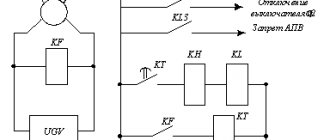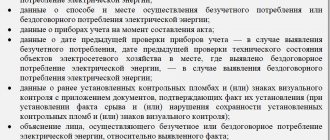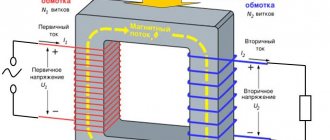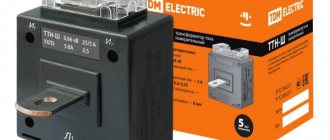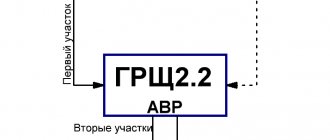What affects the characteristics of the power supply network?
The quality of electricity depends on a huge number of factors that change the indicators beyond the limits established by regulations. Thus, the voltage may be too high due to an accident at the substation. Low values appear in the evening or in the summer season, when people return home and turn on televisions, electric stoves, and split systems.
The quality of electricity according to GOSTs may vary slightly. In very poor supply networks, consumers have to use voltage stabilizers. Control over the characteristics is entrusted to Rospotrebnadzor, which can be contacted if inconsistencies arise.
Power quality may depend on the following factors:
- Daily fluctuations associated with uneven connection by consumers or with the influence of tides at sea stations.
- Changes in the air environment: humidity, ice formation on power wires.
- Changes in the wind when power is generated by wind turbines.
- The quality of the wiring will wear out over time.
Quality of power supply. Responsibility, right to recourse.
In accordance with paragraph 1 of Article 542 of the Civil Code of the Russian Federation, the quality of the supplied energy must meet the requirements established in accordance with the legislation of the Russian Federation, including mandatory rules, or stipulated by the energy supply contract.
The quality of electricity is understood as the degree of compliance of the characteristics of electrical energy at a given point in the electrical system with a set of standardized values of indicators of the quality of electrical energy - values that characterize the quality of electrical energy according to one or more of its parameters (“GOST R 54130-2010. National standard of the Russian Federation. Quality of electrical energy. Terms and definitions”, approved by order of Rosstandart dated December 21, 2010 No. 840-st).
For the reliability of supplying consumers with electrical energy and its quality in accordance with the requirements of technical regulations and other mandatory requirements, persons carrying out activities in the field of electrical energy, including the acquisition and sale of electrical energy and power, energy supply to consumers, sales of electrical energy (power), provision of services for its transmission (electric power industry entities) (Article 3, paragraph 1 of Article 38 of the Federal Law of March 26, 2003 No. 35-FZ “On Electric Power Industry”).
So, in particular, in accordance with paragraph 9 of the Basic Provisions No. 442, the supplier of last resort, among other things, is obliged to properly fulfill obligations to consumers (buyers) of electricity.
According to paragraph 15 of the Rules for non-discriminatory access to services for the transmission of electrical energy and the provision of these services (approved by Decree of the Government of the Russian Federation dated December 27, 2004 No. 861), the responsibilities of the network organization include ensuring the transmission of electricity at the point of delivery of the consumer of services, the quality and parameters of which must comply with the mandatory regulatory requirements. Several parties are involved in the energy supply process: electricity producers, power grid and other infrastructure companies, and sales organizations.
At the same time, the consumer of electricity (at least an individual who consumes electricity as a utility resource for domestic purposes), as a rule, has a legal relationship with one person - the supplier of last resort
. Under the energy supply agreement, the supplier of last resort is liable to the consumer for non-fulfillment or improper fulfillment of obligations under the contract, including for the actions of the network organization engaged to provide electric energy transmission services, as well as other persons engaged to provide services that are an integral part of process of supplying electrical energy to consumers.
At the same time, the responsibility of the network organization for the reliability of electricity supply and its quality is within the boundaries of the balance sheet ownership of the electric grid facilities of the network organization.
It follows from paragraph 30 of the Basic Provisions No. 442 that the supplier of last resort, in accordance with the civil legislation of the Russian Federation, has the right of recourse (recourse) to persons for whose actions (inactions) he is responsible to the consumer under the energy supply agreement.
Thus, the legislation on the electric power industry, firstly, obliges the supplier of last resort to resolve all issues of electricity supply with consumers, without formally involving other persons in these legal relations (clauses 9, 14, 28, 69 of the Basic Regulations No. 442).
Secondly, the legislation obliges the supplier of last resort to bear responsibility to consumers for the quality of the supplied energy resource, including for the actions (inactions) of other persons involved in the energy supply. It should be noted that the supplier of last resort does not have the right to have power grid facilities or generating devices that allow physical influence on the quality of supplied electricity, since the combination of network and sales activities in one person is generally prohibited (Article 6 of Federal Law No. 36-FZ of March 26, 2003 “On the peculiarities of the functioning of the electric power industry and on introducing amendments to some legislative acts of the Russian Federation and invalidating some legislative acts of the Russian Federation in connection with the adoption of the Federal Law “On Electric Power Industry”).
And finally, thirdly, maintaining a balance of interests of electricity industry entities, the legislation on the electricity industry gives the guaranteeing supplier the right to compensate for its losses associated with consumer claims for quality, through a recourse claim against the person who bears the risk of causing losses to the consumer, including for their accidental infliction.
Determination of the Judicial Collegium for Economic Disputes of the Supreme Court of the Russian Federation dated 09/02/2020 in case No. 303-ES 20-6012
Why are the main characteristics of the power supply network needed?
The quantitative value and deviation errors of parameters are established in accordance with GOST. The quality of electricity is specified in document 32144-2013. It was necessary to legalize these indicators due to the risk of fire in consumer devices, as well as disruption of the functioning of electrical appliances in installations sensitive to voltage drops. The latest devices are common in medical institutions, research centers, and military facilities.
Power quality indicators were updated in 2013 due to the development of the energy market and the emergence of new electronic devices. Electricity, as part of its supply, should be considered as a product that meets certain criteria. If the established characteristics are deviated, administrative liability may be applied to providers. If, due to fluctuations in incoming voltage, people were or could be injured, then criminal liability may arise.
Main indicators that determine the quality of electricity
Electric power quality is the compliance of the main parameters of the power system with the standards adopted in the production, transmission and distribution of electricity. The failure of quality indicators to exceed established standards leads to the following negative consequences:
— increased consumption and losses of electricity in power supply systems; — reducing the reliability of equipment operation; — occurrence of violations of technological processes with a simultaneous decrease in production volumes.
Quality indicators are defined in GOST R 54149-2010 “Electric energy. Electromagnetic compatibility of technical equipment. Standards for the quality of electrical energy in general-purpose power supply systems.” Let's look at the main ones below.
Basic indicators
. According to this standard, the main indicators characterizing the quality of electricity can be considered:
Frequency and voltage deviations
. The frequency deviation is the difference averaged over 10 minutes between the actual value of the fundamental frequency and its nominal value. The following are allowed:
— in normal operation, deviations are no more than 0.1 Hz; — short-term deviations of no more than 0.2 Hz.
Voltage deviation is the difference between the actual voltage value and its nominal value. The following voltage deviations are allowed during normal network operation:
— on the terminals of devices and electric motors for their control and start-up from -5 to +10%; — on the terminals of working lighting devices from -2.5 to +5%; — at the terminals of other electrical receivers no more than 5%.
At the same time, in post-emergency modes, a voltage drop of no more than 5% is additionally allowed. The main causes of voltage deviations are:
- changes in operating modes of the power system and electrical receivers; - large values of inductive resistance of 6-10 kV lines.
In order to maintain this parameter within acceptable limits, the following methods are used:
— voltage regulation on outgoing lines — voltage regulation on substation buses; — joint regulation with a simultaneous decrease (increase) of voltage both on the substation and on the lines; — additional regulation when a local change in voltage is required for a specific consumer; — voltage regulation by changing power supply circuits.
Frequency and voltage fluctuations
. This is the difference between the highest and lowest values of the fundamental frequency with a sufficiently rapid change in network parameters with a frequency change rate of at least 0.2 Hz/sec. Voltage fluctuations can be assessed using the following indicators:
1. Range of voltage changes.2. Voltage change frequencies.3. Interval between voltage changes.
Oscillations of this kind are possible during the operation of receivers that sharply change their load (welding machines, electric arc furnaces, rolling electric motors). As a result, sharp surges in the power consumed by the consumer appear in the electrical network, leading to significant changes in the network voltage.
At the same time, the performance of ordinary consumers connected to this network deteriorates. The following devices are used to smooth out voltage fluctuations:
— high-speed synchronous compensator; - synchronous motor; - static source of reactive power.
Fundamental frequency voltage unbalance factor
. Voltage asymmetry is the inequality of linear and phase voltages in amplitude and shift angle between them.
In this case, the normalized asymmetry indicator is the negative sequence voltage coefficient, which is equal to the ratio of the negative sequence voltage to the rated line voltage. Today this ratio does not exceed 2%.
Voltage waveform non-sinusoidal coefficient
, which at the terminals of electrical receivers should not exceed 5%.
Causes and consequences. A complete understanding of power quality indicators with a mandatory analysis of the causes and consequences of their changes allows modern power systems to keep them within acceptable limits.
As a result, consumers receive electrical energy that fully corresponds to the parameters required to continue the normal production process. It is worth noting that even today power engineers continue to look for means and techniques to maintain network parameters within acceptable limits.
What happens to consumers when they deviate from normal dietary patterns?
Power quality parameters affect the operating time of connected devices; this often becomes critical in production. Line productivity decreases and energy consumption increases. Thus, the torque on the motor shaft decreases when the values of the supply network indicators drop. The service life of lighting lamps is shortened, the luminous flux of lamps becomes smaller or flickers, which affects the products produced in greenhouses. There is a significant impact on the processes of other biochemical reactions.
According to the laws of physics, a decrease in voltage with a constant load on the motor shaft leads to a rapid increase in current. This, in turn, leads to malfunctions of the safety switches. As a result, the insulation melts, at best the fuses burn, at worst the motor windings and electronic elements are irreversibly damaged. Under similar circumstances, the electric meter begins to rotate at a higher speed. The owner of the premises suffers losses.
Criteria for assessing the supply network
What does GOST contain? The quality of electricity is determined by the characteristics of three-phase networks and common household circuits with a frequency of 50 Hz:
- The steady value of the voltage deviation determines the value of the characteristic at which consumers can function without failure. The lower normal limit is set from 220 V to 209 V and the upper normal limit to 231 V.
- The range of change in input voltage is the difference between the effective and amplitude values. Measurements are made per cycle of the parameter difference.
- The flicker dose is divided into short-term, within 10 minutes, and long-term, defined as 2 hours. Indicates the degree of susceptibility of the human eye to flickering light caused by power supply fluctuations.
- The pulse voltage is described by the recovery time, which has different values depending on the cause of the surge.
- Coefficients for assessing the quality of the supply network: sinusoidal distortion, temporary overvoltage values, harmonic components, reverse and zero sequence asymmetry.
- The voltage dip interval is determined by the recovery period of the parameter established in accordance with GOST.
- Deviation of the supply frequency leads to damage to electrical parts and conductors.
Controlled characteristics
The parameters of the current received by the user are generally regulated by GOSTs and subordinate documents: PUE, PTEEP. In addition, the quality indicators of electrical energy consumed by the client must be specified in the contract concluded with the supplier.
The main indicators of power quality taken into account in the complex analysis performed by LABSIZ:
- Amplitude of voltage fluctuations. Measured in real time using a voltmeter. The basic unit of time is the minute.
- Voltage distortion factor. Shows how much power quality indicators differ from the specified ones at the minimum and maximum peak.
- Voltage asymmetry factor. Shows the extent to which the characteristic is non-specular within the sine wave.
- Overvoltage factor. Requirements for electricity parameters set a limit value for overvoltage: rising above, the indicator will harm the equipment connected to the network.
- Deviations in electric power characteristics in terms of flicker amplitude/frequency. This characteristic is directly related to a person’s psychological perception of lighting. The measured value is compared with the standard value.
- Voltage dip length. A power quality analyzer helps determine the maximum amount of time during which the voltage remains below the minimum acceptable level.
All deviations from acceptable parameters are calculated in natural or percentage terms. A power quality check carried out by LABSIZ will help identify existing flaws and bring the characteristics to standard values.
Fixed input deviation
They try to make electricity quality indicators correspond to the established ratings prescribed in legislative acts. Attention is paid to the errors that arise when measuring U and f. If there are errors, you can contact the supervisory authorities to hold the electricity supplier accountable.
General requirements for power quality include the supply voltage deviation parameter, which is divided into two groups:
- Normal mode, when the deviation is ±5%.
- The permissible operating limit is set for fluctuations of ±10%. For a 220 V network, this will be a minimum threshold of 198 V and a maximum of 242 V.
Voltage restoration should occur within a time interval of no more than two minutes.
A new power quality standard GOST R 54149 has been introduced
On January 1, 2013, a new power quality standard was introduced - GOST R 54149 “Electric energy. Electromagnetic compatibility of technical equipment. Standards for the quality of electrical energy in general-purpose power supply systems.” This standard replaces GOST 13109-97, which is now outdated and does not meet modern conditions. The new GOST R 54149 was created “taking into account the basic regulations” from the European standard EN 50160 (note that the EN 50160 standard defines the main indicators of the quality of electrical energy, their standard values, averaging times and reporting period - ed.). In addition to this document, the developers of GOST R 54149 also took into account the experience of using another standard - IEC 61000-4-30:2008, published by the International Electrotechnical Commission (IEC. - ed.). Today, IEC 61000-4-30 is one of the most authoritative standards for measurement instrument manufacturers around the world. Focus on international and regional world standards is a common practice for Russian standardization. In the document “Concept for the development of the national standardization system of the Russian Federation for the period until 2021” recently adopted by the Government, the level of harmonization of the standards adopted from 2006 to 2010 (more than 3,000 documents - ed.) with international standards is estimated at 70%. With the introduction of GOST R 54149, the industry has a modern standard that does not contradict the requirements for power quality in most other countries.
Some experts have already expressed their assessments regarding the new GOST R 54149. In particular, at the scientific and technical council of the Interregional Grid Company North-West (IDGC, - ed.), the chief specialist of the metrology and power quality control department of IDGC V.L. told...
Quote : 'Electric energy is subject to mandatory certification, and the organization and implementation of a system for monitoring its quality will make it possible to identify problem areas in the network economy. Therefore, monitoring all indicators of power quality established by GOST R 54149-2010 will give a real picture of the operating modes of the network, the degree of its load and the influence of interference from power receivers on the shapes of the current and voltage curves. In addition, the monitoring results can be used as the results of periodic monitoring as required by GOST
In other words, GOST R 54149 tightens the responsibility of the network organization to the consumer for the reliability of its electricity supply. In addition, if the quality indicators of incoming electricity do not meet the norm or deviate from the standard, then the regional regulator has the right to apply penalties to the branches. Such a measure will help identify consumers introducing interference and distortion into the electrical network, since GOST R 54149 has streamlined not only the methodology for measuring power quality, but also contains fundamentally new parameters.
So, in particular, classification tables for voltage dips (sudden drop in voltage, - ed.), voltage interruptions and overvoltages have been added, and new categories of events have been revised and introduced - frequency deviation (deviation from the established norm, - ed.); slow voltage changes; voltage fluctuations and flicker (definition from the standard: a feeling of instability of visual perception caused by a light source, the brightness or spectral composition of which changes over time - ed.); non-sinusoidal voltage (non-linear loads on electrical networks - ed.); voltage unbalance (unbalance of network loads - ed.) in three-phase systems; voltage of signals transmitted through electrical networks. Random events are considered separately, namely: voltage interruptions; voltage sags and overvoltages; impulse voltages.
According to the new standard, interharmonic voltage components and voltage interruptions are now assessed as follows: short-term - up to 3 minutes, long-term - more than 3 minutes. In this part, GOST R 54149 fully complies with the parameters established by EN 50160.
The workplace certification card turns out to be the most important document, which records the implementation of the employee’s right to safe working conditions and determines the degree of responsibility of the employer.
If you find an error, please select a piece of text and press Ctrl+Enter.
Range of supply network changes
Electricity quality standards contain oversight of such a parameter as fluctuations in voltage components. It sets the difference between the upper amplitude threshold and the lower one. Considering that the tolerances for deviation of the parameter from the set value are within the limit of ±5%, the range of the limit mode cannot exceed ±10%. The 220 V supply network cannot fluctuate more or less than 22 V, and 380 V works normally within ±38 V.
The resulting range of voltage fluctuations is calculated using the following expression ΔU = Umax−Umin; in the standards, the results are indicated in % according to calculations ΔU = ((Umax−Umin)/Unominal)*100%.
Input instability
The power quality system includes flicker dose measurements. This indicator is recorded by a special device - a flicker meter, which records the amplitude-frequency response. The results obtained are compared with the sensitivity curve of the visual organ.
GOST establishes permissible limits for changing the flicker dose:
- Short-term fluctuations the indicator should not be higher than 1.38.
- Long-term changes must be within the parameter value of 1.0.
If we are talking about the upper limit of the incandescent lamp circuit indicator, then it is required that the result falls within the following limits:
- Short-term fluctuations - the indicator is set to 1.0.
- Long-term changes in the parameter - 0.74.
What to do if the supplied energy does not meet the standards
The power quality system used by LABSIZ protects the user from overpaying for low-quality goods, equipment burnout, and short circuits. In the event of an accident allegedly caused by the supplier, you must:
- Call an independent expert to conduct an examination of the affected circuit and devices.
- Obtain an inspection report confirming the inadequate quality of electricity.
- Draw up a statement of claim against the supplier, attaching to it an act issued and certified by LABSIZ.
- Go to court for damages.
In the future, it makes sense to change the supplier of low-quality energy, and if this is not possible, regularly check the supplied energy to eliminate new losses and accidents.
Tangible changes
Power quality measurements involve measurements of such a component as supply voltage pulses. It is explained by sharp drops and rises in electricity within the selected interval. The reasons for this phenomenon may be the simultaneous switching of a large number of consumers, the influence of electromagnetic interference due to thunderstorms.
Voltage recovery periods have been established that do not affect the operation of consumers:
- The reasons for the differences are thunderstorms and other natural electromagnetic interference. The recovery period is no more than 15 μs.
- If the pulses appeared due to uneven switching of consumers, then the period is much longer and equal to 15 ms.
The largest number of accidents at substations occurs due to lightning striking the installation. The insulation of the conductors immediately suffers. The magnitude of the overvoltage can reach hundreds of kilovolts. There are protective devices for this, but sometimes they fail and a residual potential is observed. At these moments, a fault does not occur due to the strength of the insulation.
Input decay time
The measured parameter is described as a voltage dip that falls within the limits of ±0.1 Unominal over an interval of several tens of milliseconds. For a 220 V network, a change in the indicator is allowed up to 22 V, if 380 V, then no more than 38 V. The depth of decline is calculated according to the expression: ΔUn=(Unominal−Umin)/Unominal.
The duration of the decline is calculated according to the expression: Δtn=tk−tn, here tk is the period when the voltage has already been restored, and tn is the starting point, the moment when the voltage drop occurred.
Power quality control requires taking into account the frequency of failures, determined by the formula: Fn=(m(ΔUn,Δtn)/M)*100%. Here:
- m(ΔUn,Δtn) is defined as the number of falls at a specified time with depth ΔUn and duration Δtn.
- M is the total count of declines during the selected period.
Procedure for estimating parameters
It is impossible to carry out full power quality control without the use of complex, high-precision instruments. Licensed ones use equipment that combines the functions of a meter and analyzer. The properties of the transmitted current are constantly changing - only periodic power quality monitoring will allow problems to be identified and eliminated in a timely manner. LABSIZ specialists are sufficiently qualified and have permission to carry out measurements and assess the condition of electrical networks.
The approximate time frame for monitoring electricity parameters is once every 6–24 months, depending on the conditions of use.
Why is the decay value needed?
The parameter, the duration of the decay of the input value, is required to assess the reliability of the supplied energy in quantitative terms. This indicator may be influenced by the frequency of accidents at the substation due to personnel negligence and lightning. The result of the failure study is predictions of the degree of failure in the network under consideration.
Statistics allow us to draw approximate conclusions about the stability of the electrical energy supply. The electricity provider is provided with recommended data for carrying out preventive measures on installations.
What is power quality?
For each type of electrical network, certain characteristics (quality parameters) are established. The correspondence between them and actual values determines the quality of electrical energy.
Changes in the PCE may occur due to losses of electricity during transmission over a distance, an increase in the consumed load, electromagnetic phenomena, etc.
To assess the quality of electricity, measurements of the main indicators of CE are carried out. They are described in detail in the standards of GOST 13109-97, as well as in its new edition 13109 99; we will provide excerpts with a brief description of each indicator.
Frequency deviation
Maintaining the frequency within certain limits is a necessary requirement of the consumer. If the indicator decreases by 1%, the losses are more than 2%. This is expressed in economic costs and reduced productivity of enterprises. For the average person, this results in higher amounts on their electricity bills.
The rotation speed of an asynchronous motor directly depends on the frequency of the supply network. Heating heating elements have lower performance when the parameter decreases below 50 Hz. If the values are too high, damage to consumers or other mechanisms not designed for high torque may occur.
Frequency deviation may affect the operation of electronics. Thus, interference appears on the TV screen when the indicator changes by ±0.1 Hz. In addition to visual defects, the risk of failure of microelements increases. A method of combating deviations in the quality of electricity is the introduction of backup power units, which allow automatic restoration of voltage at specified intervals.
Odds
For normal operation of the supply network, control of the following coefficients has been introduced:
- Non-sinusoidal voltage curve. Distortion of the sine wave occurs due to powerful consumers: heating elements, convection ovens, welding machines. If this parameter deviates, the service life of the motor windings is reduced, the operation of relay automation is disrupted, and thyristor-controlled drive systems fail.
- Temporary overvoltage is a quantitative assessment of a pulse change in an input quantity.
- The Nth harmonic is the sinusoidal characteristic of the voltage characteristic obtained at the input. The calculated values are obtained from tabular data for each harmonic.
- It is important to take into account the asymmetry of the input quantity in reverse or zero sequence to eliminate cases of uneven phase distribution. Such conditions occur more often when the power supply network connected according to a star or delta circuit is broken.
Types of protection against unpredictable changes in the power supply network
Improving the quality of electricity must be carried out within the time limits specified by law. But the consumer has the right to protect his equipment using the following means:
- Power stabilizers guarantee that the input value is maintained within the specified limits. Quality energy is achieved even with input value deviations of more than 35%.
- Uninterruptible power supplies are designed to maintain the functionality of the consumer for a specified period of time. The devices are powered by the accumulated energy in their own battery. In the event of a power outage, uninterruptible power supplies are capable of maintaining the functionality of the equipment of an entire office for several hours.
- Surge protection devices operate on the relay principle. After the input value exceeds the set limit, the circuit opens.
All types of protection have to be combined to ensure complete confidence that expensive equipment will remain intact during an accident at a substation.
